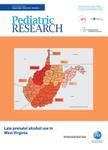版权所有:内蒙古大学图书馆 技术提供:维普资讯• 智图
内蒙古自治区呼和浩特市赛罕区大学西街235号 邮编: 010021

作者机构:Univ Munich Klinikum Grosshadern Dept Obstet & Gynecol Div Neonatol D-81377 Munich Germany Univ Miami Dept Pediat Div Neonatol Miami FL 33152 USA
出 版 物:《PEDIATRIC RESEARCH》 (儿科研究)
年 卷 期:2001年第49卷第2期
页 面:169-174页
核心收录:
学科分类:1002[医学-临床医学] 100202[医学-儿科学] 10[医学]
主 题:Airway Resistance Plethysmography 气道阻力 体积描记术 Signaling In Band Dead band Servo control Airway Resistance relative gain Ventilators airway pressures Proportional Assist Ventilation Rib Cage Plethysmography input signal
摘 要:During proportional assist ventilation (PAV), the ventilator pressure is servocontrolled throughout each spontaneous inspiration such that it instantaneously increases in proportion to the airflow (resistive unloading mode), or inspired volume (resistive unloading mode), or both (combined unloading mode). The PAV pressure changes are generated in a closed-loop feedback circuitry commonly using a pneumotachographic signal. In neonates, however, a pneumotachograph increases dead space ventilation, and its signal may include a substantial endotracheal tube leak component. We hypothesized that respiratory inductive during proportional assist ventilation (PAV), the ventilator pressure is servocontrolled throughout each spontaneous inspiration such that it instantaneously increases in proportion to the airflow (resistive unloading mode), or inspired volume (elastic unloading mode), or both (combined unloading mode). The PAV pressure changes are generated in a closed-loop feedback circuitry commonly using a pneumotachographic signal. In neonates, however, a pneumotachograph increases dead space ventilation, and its signal may include a substantial endotracheal tube leak component. We hypothesized that respiratory inductive plethysmography (RIP) can replace pneumotachography to drive the ventilator during PAV without untoward effects on ventilation or respiratory gas exchange. Ten piglets and five rabbits were supported for 10-min (normal lungs) or 20-min (meconium injured lungs) periods by each of the three PAV modes. In each mode, three test periods were applied in random order with the ventilator driven by the pneumotachograph signal, or the RIP abdominal band signal, or the RIP sum signal of rib cage and abdomen. Interchanging the three input signals did not affect the plethysmography (RIP) can replace pneumotachography to drive the ventilator during PAV without untoward effects on ventilation or respiratory gas exchange. Ten piglets and five rabbits were supported for